As I prepared our morning coffee in the kitchen, watching the early nuthatch enjoying his breakfast, ‘The Red Baron’ swooped, like a kamikaze pilot, with deadly aim. The robin’s beak would have been buried in the side of his enemy, had not the milder creature taken off sharpish.
A baby rabbit sat on the grass outside the kitchen door, contemplating Jackie’s new planting, scuttling under the robin’s hedge at the sight of her, probably having thought she was Mr. McGregor. This means we will need to put netting over the anti-deer railings, buried, according to Matthew, to a depth of six inches. Later in the day Jackie dismantled her elegant railing structure, lifted the bricks at the bottom, and disturbed half a dozen ants’ nests. Which, especially as that meant a trip to buy ant powder, was dispiriting. After going off for the deterrent, she didn’t much feel like starting on the reinforcement today, which, as I would have to do the digging, didn’t exactly fill me with dismay. So I put everything back as it was, well dusted with powder, ready for the job to be done tomorrow.
In ‘Our Shrinking World’, published on 28th April, I wrongly attributed a picture taken by Elizabeth about ten years ago. Today I corrected this and took the opportunity to amend the text.
On this glorious morning I went on a Woodland Trust Ancient Tree Hunt expedition with Berry. When she asked me the date, and I replied that it was the first of May, she cried ‘rabbits’, so I told her what Jackie had seen earlier. All within half a mile of our homes we plotted five oak trees and a beech, all of which Berry will submit to the Trust for verification. I took most of the photographs which will accompany details of Berry’s discoveries. 
 Three oaks were within a stone’s throw of each other in the approach to Castle Malwood Farm, on the other side of the underpass. Two more were at Seamans Corner. The beech was alongside our Upper Drive.
Three oaks were within a stone’s throw of each other in the approach to Castle Malwood Farm, on the other side of the underpass. Two more were at Seamans Corner. The beech was alongside our Upper Drive.
To qualify for this national collection trees must be of a certain age, assessed by their girth; or have some other remarkable feature. One, for example, that we didn’t have time for today, is an oak tree growing out of a beech. There is no hurry, for it is not going anywhere.
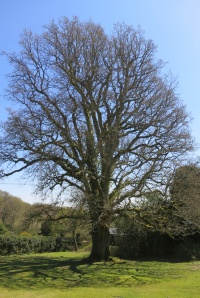 We have to plot a precise grid reference; measure the girth of the tree at the lowest point; and indicate the height at which the measurement was taken. The tree has to be named, and described in some detail. There are terms such as ‘maiden’ or ‘pollard’ which aficionados recognise as descriptive of the treatment or otherwise of the growth. I’m not quite sure I have grasped their true significance. Details of the condition of the trunk and branches, such as any dead wood on or beneath the tree, or any holes therein. Moss, lichen, ivy, fungi, and honeysuckle were all noted; as were any particular points of interest,
We have to plot a precise grid reference; measure the girth of the tree at the lowest point; and indicate the height at which the measurement was taken. The tree has to be named, and described in some detail. There are terms such as ‘maiden’ or ‘pollard’ which aficionados recognise as descriptive of the treatment or otherwise of the growth. I’m not quite sure I have grasped their true significance. Details of the condition of the trunk and branches, such as any dead wood on or beneath the tree, or any holes therein. Moss, lichen, ivy, fungi, and honeysuckle were all noted; as were any particular points of interest,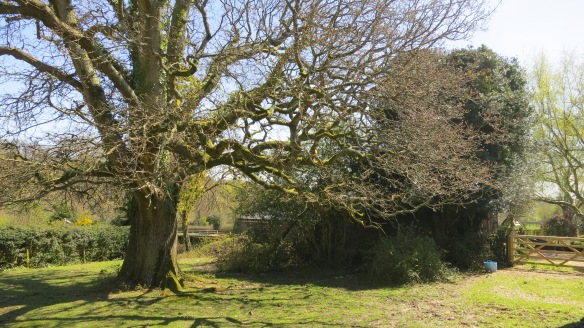 such as the beauty of the shape of the oak outside Eugenia Cottage. The tree does of course have to be named, and we need to say whether it is alive or dead, standing or fallen.
such as the beauty of the shape of the oak outside Eugenia Cottage. The tree does of course have to be named, and we need to say whether it is alive or dead, standing or fallen.
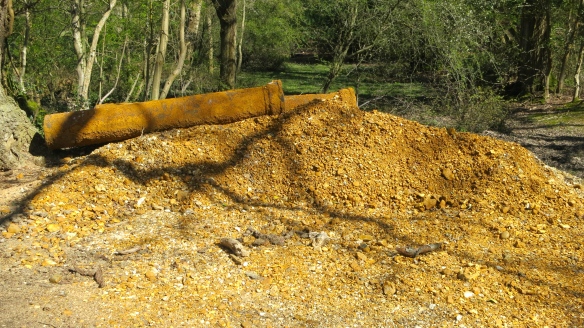 Berry was amused at my tendency to go off on a tangent and take photographs of such as a couple of pipes lying on gravel because I liked the symphonic colour. This diversion tended to puzzle John Turpin when we were taking the pictures for ‘The Magnificent Seven’.
Berry was amused at my tendency to go off on a tangent and take photographs of such as a couple of pipes lying on gravel because I liked the symphonic colour. This diversion tended to puzzle John Turpin when we were taking the pictures for ‘The Magnificent Seven’.
Near the farm, the cry of a buzzard alerted us to the sight of two crows chasing it off.
Today’s title has been borrowed from the BBC television series and Thomas Pakenham’s book of photographs.
Our dinner was Jackie’s liver and bacon casserole, complemented, in my case, by Piccini Montepulciano D’Abruzzo riserva 2010. The meal was completed by sticky toffee pudding with custard for me, and cream for Jackie.
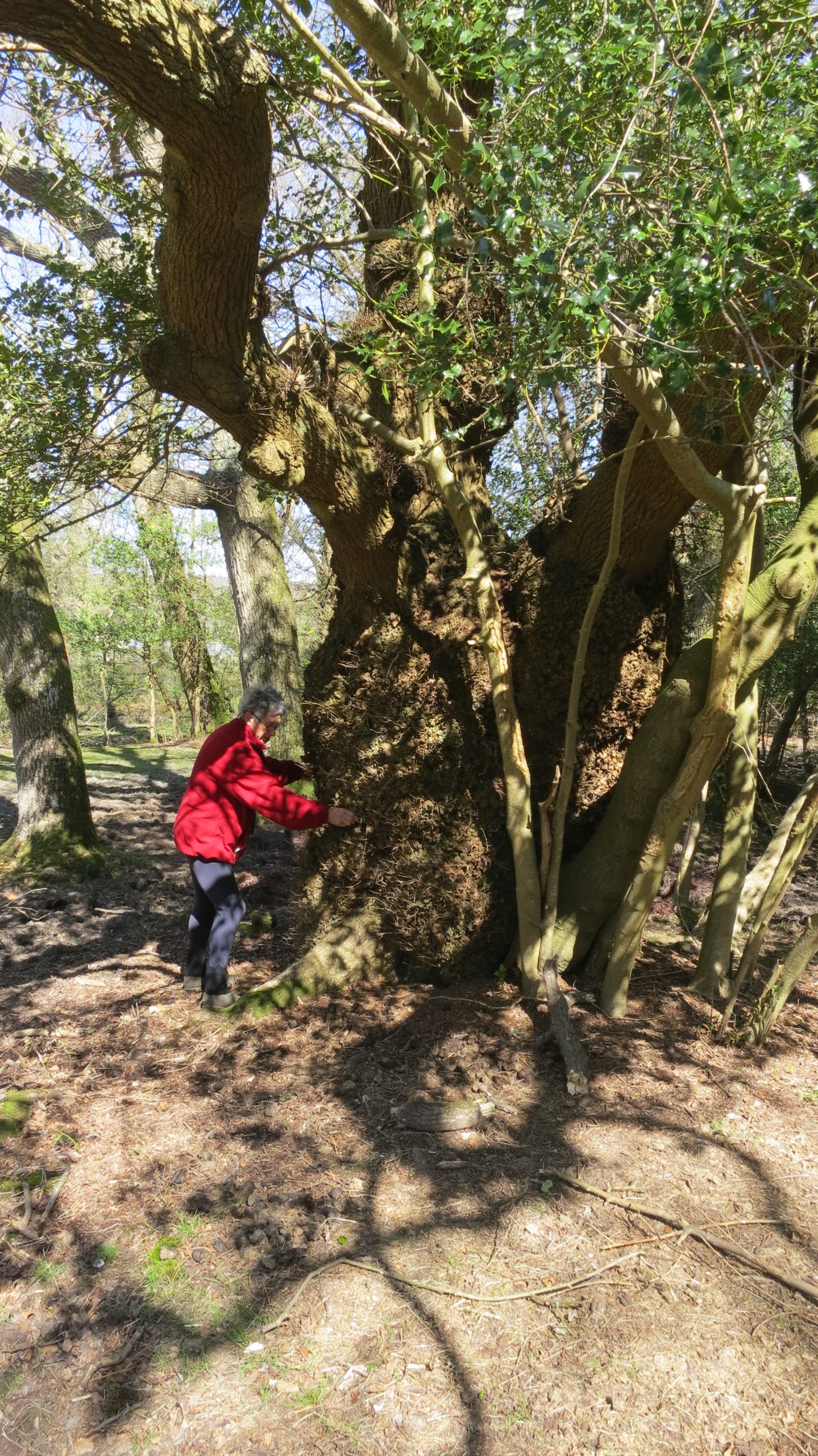
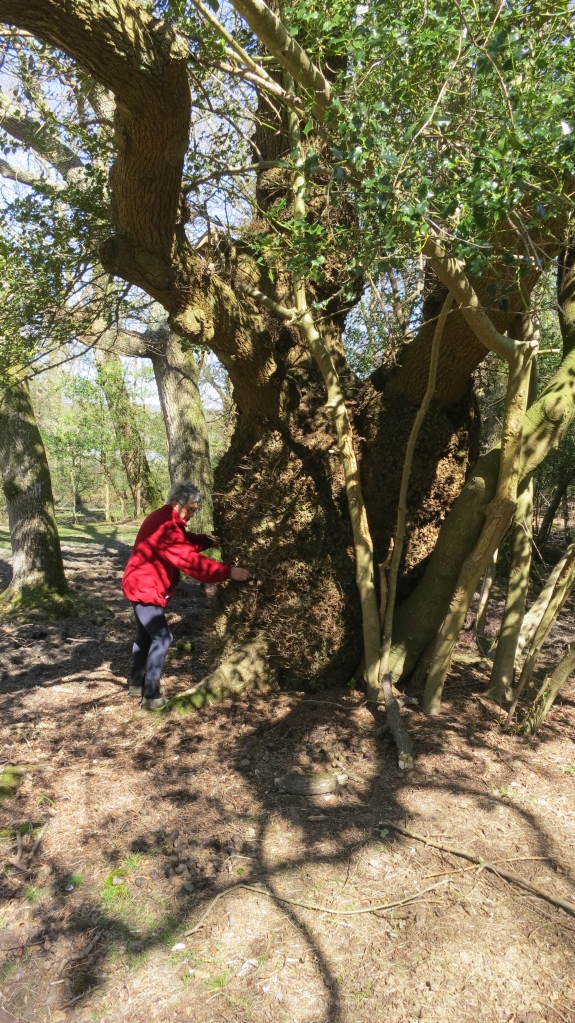
4 comments